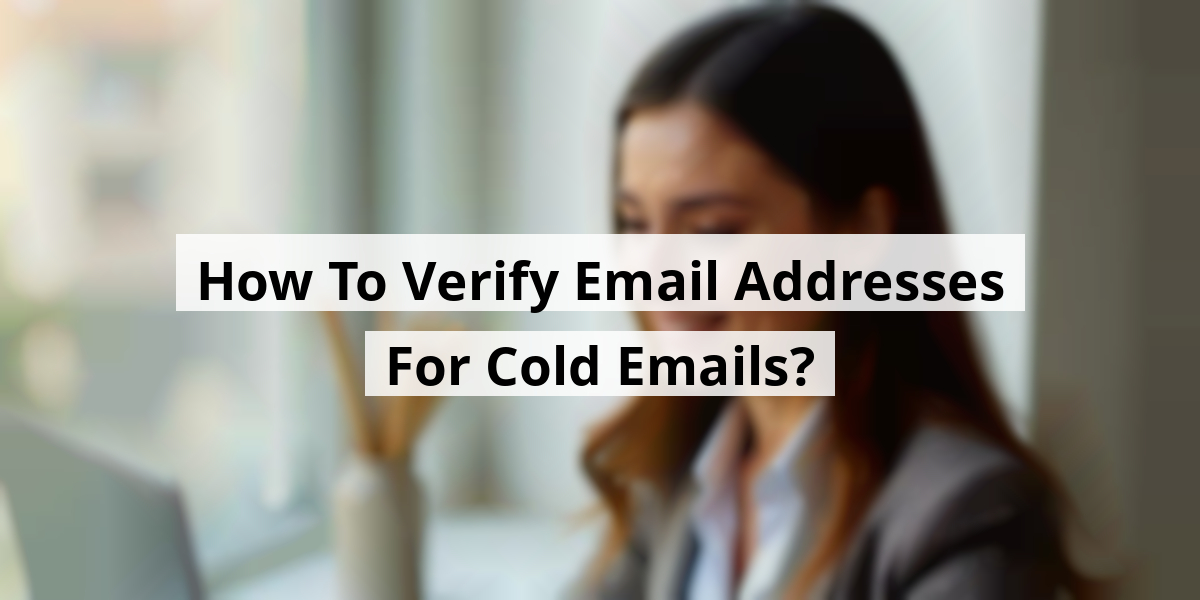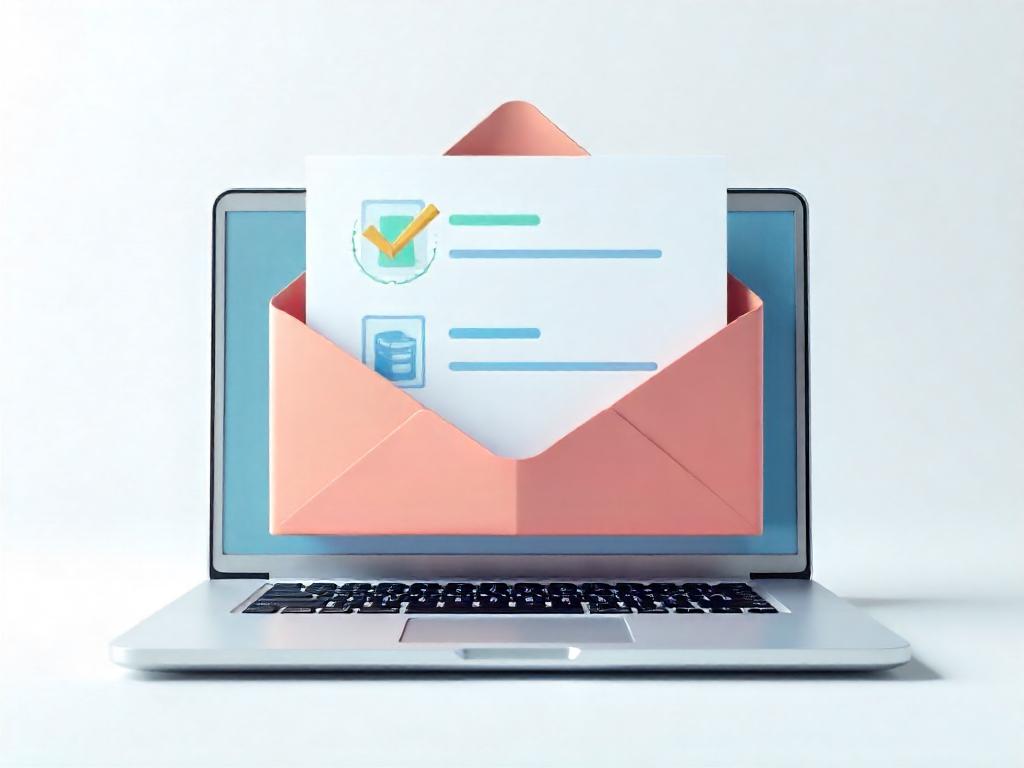 LIMITED SPOTS
All plans are 30% OFF for the first month! with the code WELCOME303
LIMITED SPOTS
All plans are 30% OFF for the first month! with the code WELCOME303

 LIMITED SPOTS
All plans are 30% OFF for the first month! with the code WELCOME303
LIMITED SPOTS
All plans are 30% OFF for the first month! with the code WELCOME303


Now we are going to talk about a nifty little thing called email verification, which is essential in our tech-savvy lives. It's like double-checking if that friend will actually show up to your potluck or just send a text at the last minute saying they "got busy." We all know that friend too well!
Email verification is like a trust fall for email addresses. You’re not just tossing your message into a void, hoping it lands somewhere meaningful. It’s about checking if that email address is legit and belongs to someone who’s ready to interact.
Think of it as a bouncer at a fancy club. You wouldn’t want to let a bunch of sketchy email addresses in, right? Those bad apples could throw a wrench in your email marketing efforts faster than a cat on a hot tin roof! Here’s what makes email verification a must-have:Now we are going to talk about why verifying email addresses is crucial for effective cold emailing. Trust us, skipping this step is like going to a potluck without a dish—it's bound to end in disappointment. So let’s dig into why having a clean email list matters.


Imagine crafting the perfect email only to have it bounce back like a bad check—ouch! High bounce rates can land you in hot water with your email service provider. When we let invalid emails linger, it’s like bringing expired milk to a picnic; it's just gross. Validating your email list will help cut down those bounce rates drastically!
Your sender reputation is like your credit score for email; the higher it is, the better the chances your emails land in inboxes. A low score after sending to a bunch of dodgy addresses can make your account look like it’s committed email fraud! Verifying email addresses keeps your score healthy, helping your emails smoothly sail past spam filters.
Engaging with interested individuals is like hosting a dinner party where everyone loves the food. When your emails land in the inboxes of real people, the chances of them opening and clicking through increases. With valid addresses, your open and click rates could be soaring like a kite on a windy day! More engagement means more potential customers!
Sending emails to invalid addresses is like trying to gauge how many people attended a concert based on ticket sales—yikes! Bad addresses skew our campaign metrics, making it harder to understand what’s working and what’s as entertaining as watching paint dry. By verifying your list, you can rely on accurate data to guide your future campaigns.
Improving your email campaigns is a bit like getting a haircut; sometimes, a little trim is all it takes for a fresh look. Removing invalid email addresses can significantly enhance your results. Less clutter means more direct hits to your intended recipients. Higher open and reply rates will leave you feeling like you just won the lottery!
In essence, we can all agree that verifying your email addresses isn't just a good practice—it's a necessary step in our communication game. Let’s keep it clean and effective out there!
Next, we are going to talk about the intriguing differences between email validation and email verification. Trust us; it’s a conversation that will make you appreciate your next newsletter send-out much more!

Email validation is like checking your friend’s culinary skills before you show up for dinner. Does the email format fit in the right zip code? Here’s the scoop: it ensures that the email address follows all the grammar rules—like having that pesky ‘@’ and dot—without any funny business like odd characters. Imagine your buddy sending you “user@domain.com” for pizza orders. Solid. But if it were “user@domain” or “user@.com,” you’d probably end up with no pizza and a confusing evening—talk about a recipe for disaster! However, validation doesn’t guarantee that the email address is alive and kicking; it only checks its looks.
Now, this is where things heat up! Email verification takes it up a notch, kind of like a cooking show where they actually taste the dish. Instead of just looking at the menu, you send a test email or do a little behind-the-scenes magic using SMTP protocols to confirm if that email address can actually receive messages. It’s like making sure your friend really remembers to turn on the stove. This magic helps keep your email marketing campaigns robust, reducing those bounces! Who wants to see that sad “undeliverable” notification? Certainly not us!
To summarize: email validation fixes the syntax, while email verification checks if the address plays ball. Both are vital ingredients in the recipe for a successful email marketing strategy. Let’s whip up a quick table for clarity:
| Feature | Email Validation | Email Verification |
|---|---|---|
| Purpose | Checks format and syntax | Confirms existence and activity |
| Checks for | Correct symbols and structure | Live email inbox |
| Outcome | Email looks correct | Email can receive messages |
| Importance | Prevents invalid addresses | Reduces bounces in campaigns |
So, next time you hit “send,” remember: it’s not just about looking good; it’s about delivering the goods!
Now we are going to talk about verifying email addresses. Trust us, it’s more fun than it sounds!
Verifying email addresses can happen in two distinct ways: by sending out those emails or simply skipping to other methods altogether.
Here are a couple of methods for email verification that involve hitting that send button,
Sending an email might seem like a no-brainer. If it bounces back, just toss the address into the "do not use" pile, right? But hold up! This way is like playing with fire. It’s an easy way to mess up your metrics and potentially tarnish your precious domain reputation.
Here’s a better way: fire off a test email from a temporary account. Yes, it’s like sending your friend to the grocery store with a weird list. If you get a hard bounce, great! You can promptly kick that address out of your list. Remember, no worries about your main domain here.
Just keep in mind, legwork comes next—like digging through responses manually. It can feel like counting grains of rice! Plus, there’s a chance your email could end up in that dreaded spam folder.
Let’s move on to the less traditional—yet still effective—email verification methods.
Here are some nifty techniques for verification that skip the email altogether,
The most prevalent issue? Typos. It happens to the best of us—like mistaking @gmol.com for @gmail.com. We’ve all sent embarrassing messages at some point, haven’t we?
Just remember that valid emails usually have three parts: a unique identifier, an “@” symbol, and a domain name. Take, for example, xyz@abc.com. Simple, right? Let’s ensure it adheres to the rules, or you’ll find your emails doing a boomerang back to you!
Feeling a bit adventurous? Pinging the server could work. But beware—it's a task best left to the tech-savvy. If you’re not cautious, it might just bite back!
Want to check if the domain exists? Enter the digital realm of DNS Lookups. Tools abound, like MXToolbox DNS Check. Just pop in the domain, and voilà! If nothing shows up, that domain is on vacation—permanently!
Let’s dig a little deeper. Using an IP lookup reveals details about the recipient's email server. With the help of MX Toolbox again, you simply enter the recipient's email, choose an IP, and let it do the heavy lifting. Finding a red flag can be your first clue on whether to steer clear.
Last but definitely not least, why not use a specialized tool? These babies take the burden off our shoulders. Just upload your list, and let the tool work its magic. We wouldn’t even think twice when a single click gives us peace of mind!
While there are many paths to take, this is probably the most efficient way to stay in the game.
So, ready to verify some emails? Let’s get to it and conquer those inboxes!
Next, we're going to chat about why keeping your mailing list in tip-top shape is crucial. Spoiler alert: It's like cleaning your fridge – nobody wants to find expired leftovers when they reach in for a snack!


When you get your hands on a shiny, new mailing list, don’t just dive headfirst into your email blasts. Verify those addresses first! Think of it as checking the date on a carton of milk before your morning cereal – nobody wants sour emails ruining their reputation.
It’s all too easy to end up with the digital equivalent of junk mail. A good verifier can squash those bad apples and keep your sender reputation sparkling clean. It’s like having a trusty sidekick on your sales journey.
So, you’ve been sending emails and suddenly your bounce rates resemble a jumping bean convention. Time to hit the brakes and check your list. Regular checks can save you from going down the slippery slope of poor email deliverability.
If your emails aren’t landing in inboxes and are bouncing around aimlessly like a stray dog, it’s a sign your list might need some TLC. Nobody likes being ghosted – including your campaign!
Just as you wouldn’t let your gym membership gather dust, your email list shouldn’t be neglected. A good rule of thumb? Check in with your list every few months. It’s like decluttering your closet, you’ll be surprised at what you find!
People change jobs, and their email addresses do too. Perhaps they even switched from a boring corporate job to their dream gig. Whatever the reason, keeping your list fresh is the key to maintaining strong communication!
While there are plenty of free tools to validate email addresses, they usually come with limitations that can be a real drag for busy bees in sales. Frequently, these tools let you verify just one email at a time. That’s like checking your messages one by one with a dial-up connection!
Instead, consider investing in a sturdy paid tool. It’ll save you time, letting you dedicate more energy to nurturing those precious leads instead of messing around with endless clicks.
Next, we’re going to discuss why verifying your emails is a game plan you need to have in your back pocket. It's not just something for tech wizards or marketing gurus; it's for all of us who want to ensure our messages land in the right inboxes.
Email verification might sound like an extra chore, but believe us, it’s as crucial as checking if your fly is down before a meeting. Nobody wants to look unprofessional, right? A reliable email verification process is like a trusty umbrella; it protects you from unexpected downpours on your campaign.
Let’s be real. We all know that feeling when we send out a beautifully crafted email, only to realize later that half of the addresses were outdated or, worse, filled with spam bots. It’s like putting on your favorite shoes only to step in gum—frustrating and totally avoidable!
Also, there’s a noticeable difference between cold emailing and email marketing. Cold emailing is like introducing yourself at a party, while email marketing is like sending invitations to a barbecue—both have their place, but they cater to different situations.
Using a good email verification tool can make this process seamless. Imagine having a digital assistant who double-checks your guest list before the big bash. It’s not just about hygiene; it’s smart marketing! That said, don’t be that person who sends an email to “no-reply@fakemail.com” expecting a response. We’ve all been there—it’s like yelling into the void!
And just when you think you’ve got it covered, those pesky typos can sneak in. Every time we hit “send,” it’s like setting off a confetti cannon in an empty room—great to look at if it’s aimed right, but oh boy, if it isn’t!
So, take the plunge and get those emails verified. It might seem like an extra step, but it’s definitely worth it when your messages land where they’re supposed to. After all, we don't need any more unintended e-flops in our lives, right?
Wishing us all the best of luck in those verification endeavors! Let's keep our inboxes clean and our campaigns rolling smoothly.
Now we are going to talk about some commonly asked questions regarding email verification. It's one of those topics that seem simple until you're knee-deep in spam and bounced messages, am I right?

| Question | Answer |
|---|---|
| How to verify email addresses without sending emails? | Check syntax, ping the server, or use an email verification tool. |
| What email verification tool to choose, free or paid? | Paid tools are better for bulk verification. |
| Why is email address verification needed? | To prevent bounces and keep out malicious addresses. |

